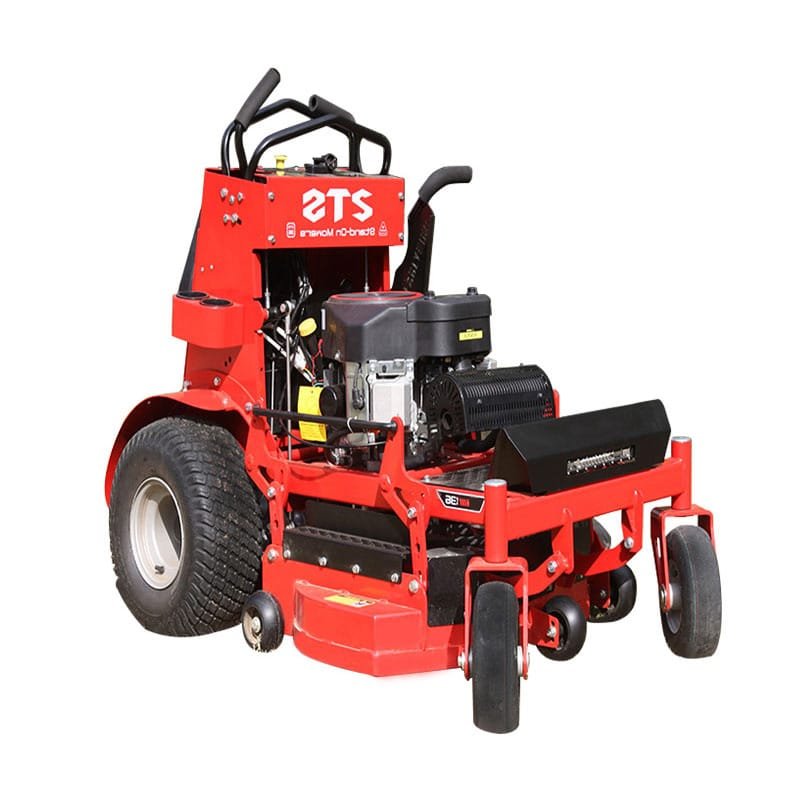A reliable lawn mower is an essential tool to achieve this goal for many homeowners. However, unpredictable weather, especially rain, can disrupt your lawn care routine. A common question that arises is:Will a lawn mower work after rain?The answer depends on several factors, including the type of lawn mower, the condition of your lawn, and safety considerations. Let’s explore this topic in detail.
Types of Lawn Mowers and Their Suitability for Wet Conditions
- Gas-Powered Lawn Mowers:
Gas-powered mowers are generally more robust and can handle slightly damp grass better than electric models. However, mowing wet grass with a gas mower can still pose challenges. Wet grass tends to clump together, clogging the mower’s deck and reducing its efficiency. Additionally, operating a gas mower on wet terrain increases the risk of slipping or losing control. - Electric Lawn Mowers:
Electric mowers, whether corded or cordless, are less suitable for wet conditions. Water can damage the electrical components, posing a safety hazard. Wet grass can also cause the mower to struggle, leading to uneven cuts and potential motor strain. - Manual Reel Mowers:
Manual reel mowers are the least effective in wet conditions. Wet grass is heavier and harder to cut, making the task physically demanding and less efficient.

Challenges of Mowing Wet Grass
Mowing a lawn immediately after rain presents several challenges:
- Clumping: Wet grass clippings tend to stick together, forming clumps that can smother the lawn and create an uneven appearance.
- Uneven Cutting: Wet grass blades are more flexible, making it harder for the mower to achieve a clean, even cut.
- Soil Compaction: Wet soil is softer and more prone to compaction under the weight of the mower, which can damage the grass roots and hinder growth.
- Safety Risks: Wet surfaces increase the risk of slipping, especially on slopes or uneven terrain.
When Is It Safe to Mow After Rain?
While it’s generally advisable to wait until the grass is dry, there are situations where mowing after rain may be necessary. Here are some tips to ensure safety and effectiveness:
- Wait for the Right Time: Allow the grass to dry as much as possible. Early morning dew or light rain may dry within a few hours, while heavy rain may require a full day or more.
- Check the Soil: If the soil is soggy or waterlogged, avoid mowing to prevent compaction and damage to the lawn.
- Adjust the Mower Height: Set the mower to a higher cutting height to reduce strain on the machine and minimize clumping.
- Clean the Mower: After mowing wet grass, clean the mower’s deck and blades to prevent rust and clogging.
Tips for Mowing Wet Grass
If you must mow wet grass, follow these best practices:
- Use a Gas-Powered Mower: Opt for a gas-powered mower, as it is better equipped to handle damp conditions.
- Mow Slowly: Take your time to ensure an even cut and reduce the risk of slipping.
- Empty the Bag Frequently: If your mower has a grass collection bag, empty it often to prevent clumping and maintain efficiency.
- Sharpen the Blades: Sharp blades make cleaner cuts, reducing the strain on the mower and improving the lawn’s appearance.
Long-Term Lawn Care Considerations
Mowing wet grass occasionally is unlikely to cause significant harm, but frequent mowing in wet conditions can lead to long-term damage. Here’s how to protect your lawn:
- Aerate the Soil: Regular aeration improves drainage and reduces the risk of compaction.
- Fertilize Appropriately: Proper fertilization promotes healthy grass growth, making it more resilient to stress.
- Water Wisely: Avoid overwatering your lawn, as excessive moisture can weaken the grass and make it more susceptible to disease.
Conclusion
While a lawn mower can technically work after rain, it’s not always the best idea. Wet grass poses challenges for both the mower and the lawn, and safety risks increase in slippery conditions. Whenever possible, wait for the grass to dry before mowing. If you must mow wet grass, take precautions to protect your equipment and ensure a clean, even cut. By understanding the limitations and following best practices, you can maintain a healthy, beautiful lawn even in less-than-ideal weather conditions.